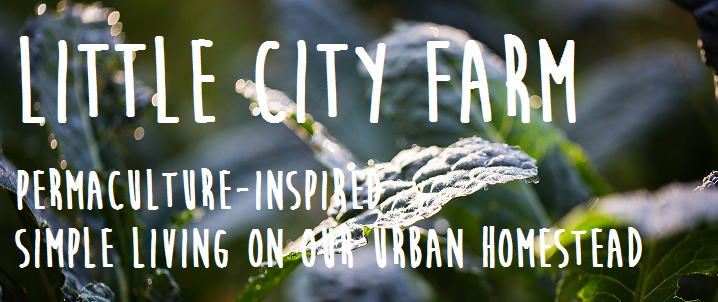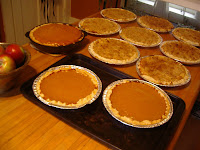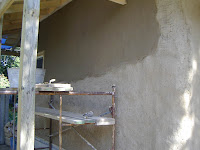
This is my favourite time of year - the days are warm and mellow, the garden harvest is at it's peak, fall fruits that I love (pears, plums, apples, local grapes) have come into season, evenings are perfect for bonfires and cozy woolen sweaters, and we've pulled out our warm quilt for sleeping again. This weekend saw all of the above - lots of garden harvest, some canning and preserving, some baking, a toasty fire, cozy clothes, and a few long fall walks...
We canned up the bushel of pears, and will be making pear pie (dutch pear pie) tomorrow with a handful of pears left over. Below is the pear sauce recipe - very easy (it can even be done over two days, making the sauce one day and canning it the next) - and no sugar is added. We eat it with homemade yogurt and granola for breakfast, or as a dessert.
It was also time to pack the crock pickles (mentioned on this blog a few months ago when we started the crock) into jars - the flavours are just perfect and that is the point to put the pickles plus brine into jars in the fridge for longer storage. I have a friend who also just keeps these jars of fermented goodness in a dark cool storage area (non-refrigerated). I may have to try that as our fridge is pretty full these days. Fermenting foods is so simple, and so rewarding (and so healthful)! Like the sourdough starter that I've been experimenting with, it seems difficult to go wrong with it. Today's sourdough starter turned into 7 loaves and a large pan of sourdough cinnamon buns, and a pizza crust - this sourdough recipe is very versatile. Between fermented foods, sprouting indoors, winter kale, and our coldframe/greenhouse salad greens, I plan to get us through the winter months with fresh vitamin-mineral-enzyme rich locally produced food. The foods we've canned or put in the freezer will be a bonus too!
Easy Pear or Apple SauceBushel of pears or apples
7-12 large mason jars, rings and lids
1) Wash, cut and core pears (or apples), but do not need to peel.
2) Slowly simmer pears with a little water in large pot until they are extremely soft (several hours). Remember to stir occasionally.
3) Puree pears into thick sauce and heat sauce, continuing to stir often so it does not burn.
4) Meanwhile prepare canner by heating water and sterilizing jars.
5) When canner of water is boiling, fill hot jars with hot pear sauce to within 1/2 inch from top (i.e. 1/2 inch "headspace"). Wipe rims to remove any stickiness.
6) Heat canning lids according to instructions on package (usually 5 minutes in boiling water to soften the seals). Fasten onto the hot jars tightening slightly ("finger tight").
7) Set jars in hot canner, and when water returns to boiling, boil for 20 minutes (20 minutes for 500 ml jars).
8) Take jars out, let sit for 24 hours to cool. Check to see that all lids have sealed (concave if sealed). Label and store for future use!






































